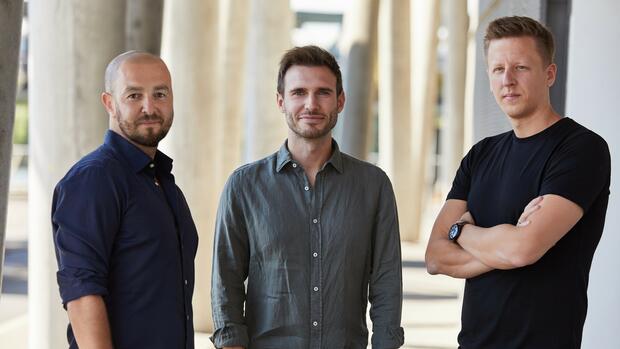Berlin Emissions trading is an important part of European climate policy. The EU Commission determines how many tonnes of emissions may be released into the atmosphere and distributes the corresponding certificates. Across Europe, around 10,000 installations from the energy and industry sectors are obliged to participate in emissions trading.
However, many medium-sized companies would like to reduce their CO2 footprint independently – and embark on voluntary emissions trading. The start-up Senken has created a digital trading platform for this market.
The climate fintech wants to make the voluntary emissions market more transparent and sustainable. For this, it uses blockchain technology to automate trading. Project developers and companies are brought together on the platform.
The voluntary emissions market is unregulated, companies and individuals can buy and sell emission reductions or climate protection measures there. Various types of climate protection projects or measures are traded.
Senken was founded in March 2022 by Adrian Wons, Djamel Mekibes and René Schäfer. Wons is an engineer and, before founding the company, worked in the blockchain sector at the business consultancy EY and the automotive supplier Continental. After moving to South Africa, he got in touch with project developers who implement climate initiatives. What Wons learned: Voluntary trading in CO₂ certificates is often non-transparent and inefficient.
He and his co-founders then tackled climate fintech, and the platform went live in October 2022. What the Berlin company does: It excludes intermediaries on the digital trading platform for emission certificates and thus creates transparency. Senken currently employs 36 people.
The start-up is financed by venture capital; the last round of financing in January 2023 raised 7.5 million dollars. The investors in Germany include Vanagon Ventures, as well as financiers from Silicon Valley.
How does the digital trading platform work?
“We bring together project developers on the one hand and companies on the other who want to participate in voluntary emissions trading,” explains Adrian Wons. Unlike other providers in the voluntary issuance market, Senken does not use intermediaries who complete transactions over the phone.
At sinks, trading is done using blockchain technology. Companies buy so-called carbon credits via the platform. On the digital marketplace, users can then choose from various climate projects that are intended to compensate for the damage caused by their own CO2 emissions. The projects are often realized in emerging or developing countries. The companies that voluntarily obtain certificates often refer to themselves as climate-neutral.
The projects are transparently displayed to users online, and companies can see how much money actually goes to the respective climate protection project. “The whole history is tracked completely on the blockchain,” explains Wons. The start-up takes two percent transaction costs. This is possible because the trades are created automatically through a so-called smart contract. Senken currently has around 5900 users.
To ensure that the certificates are genuine, Senken works with companies that verify the transactions. The climate fintech also uses rating agencies. The projects are evaluated by the agencies and classified into different classes.
Sandro Stark from Vanagon Ventures sees the start-up as a prime example of the use of blockchain: “Projects can be easily listed and access is possible at any time, for any person and any company worldwide.” This enables rapid growth.
What are the challenges?
Although blockchain technology is a crucial part of the startup, the term was initially off-putting to users and investors. Co-founder Adrian Wons says: “The terms climate protection and blockchain are two polarizing topics. That was a deterrent for many at first.” The technology now runs in the background and the company advertises less with it. The focus is particularly on the sustainability aspect and transparency.
Other parts of the Start-up Check series:
In addition, trading in emission certificates is repeatedly criticized. Companies try to transfer their responsibility for climate change to the certificates instead of taking action themselves. The oversupply of emission certificates, which is dampening prices, has also been criticized. In addition, important sectors such as road transport, heating and agriculture are not yet represented in emissions trading.
“Sinks seem to create a marketplace that reduces search and information costs,” explains Christine Merk, Deputy Director of the Global Commons and Climate Policy Research Center at the Kiel Institute. However, the emissions researcher warns that the real problem, monitoring the projects and verifying the CO2 savings, will not be solved.
What’s next?
Adrian Wons has a clear idea for the coming years: “We are increasingly positioning ourselves as a complete climate asset platform.” In addition to certificates, the start-up would also like to integrate energy strategies into the platform in the future.
He advises other founders to publish the first prototype as soon as possible. When you come out with the first developments and ideas, you get direct feedback and that helps to improve the product.
A lot is happening on the voluntary market right now: products carry labels such as “climate neutral” and certification organizations are being criticized for flattering compensation payments.
More: Daylight Eco brings the solar power plant with artificial intelligence to the balcony
